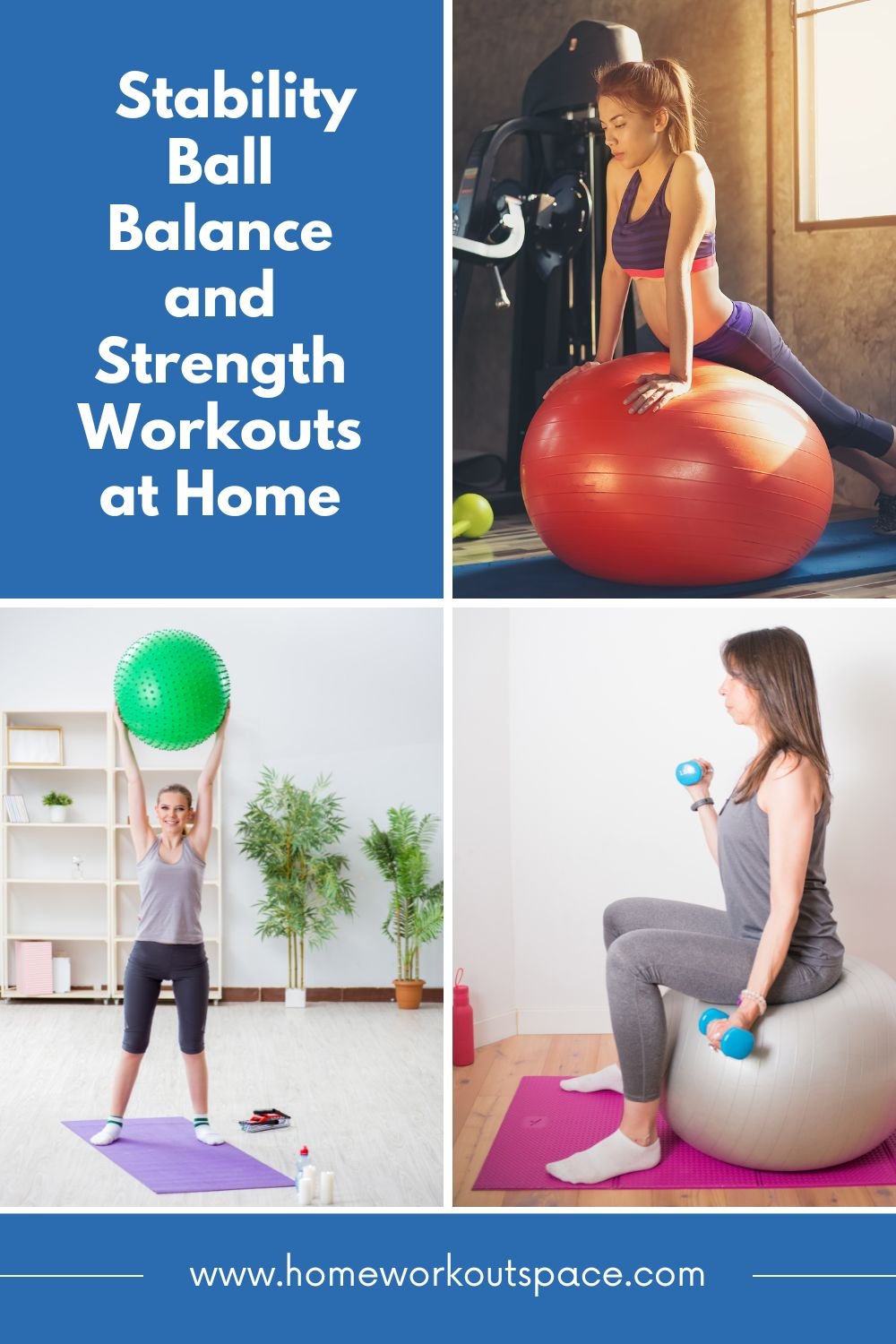Stability Ball Balance and Strength Workouts at Home
Training with a stability ball is an excellent way to challenge your balance, build core strength, and get a full-body workout without needing any complicated equipment.
Also known as an exercise ball, Swiss ball, or yoga ball, this simple piece of gear can be incorporated into a variety of bodyweight exercises to amp up the intensity and engage your stabilizing muscles.
Natural Supplements To Help Support Your Home Workouts
✅ Increase Your Pumps And Performance
✅ Promote Muscle Growth And Boost Energy
✅ For Powerful Muscle Growth
✅ Pack On Lean Muscle
✅ Next-generation Fat Burner
✅ Supergreens For full spectrum nutrition
The instability of the ball forces your body to engage more muscle groups as you work to maintain your balance and form. This recruits your deep stabilizer muscles along with the primary movers, resulting in greater overall strength gains. Performing exercises on the ball also improves proprioception, which is your body’s awareness of its position in space.
Best of all, stability ball training can be done right from the comfort of your home with minimal equipment required. All you need is an exercise ball and enough floor space to move around safely. The workouts are versatile, challenging, and can be scaled up or down to suit any fitness level.
So get ready to have a ball with these fun and effective stability exercises you can do at home!
Benefits of Stability Ball Training
- Improves overall balance and proprioception
- Enhances core strength and stability
- Works multiple muscle groups simultaneously
- Low impact and easy on joints
- Increases calorie burn and metabolic rate
- Versatile for all fitness levels
- Can be done anywhere with just a ball
Getting the Right Stability Ball
Choosing the correct size ball is crucial for safe and effective training. Here are some tips on finding the right fit:
- Stand next to the ball and ensure it reaches around the height of your belly button or hip bones
- For most women under 5’4″, a 55cm ball works well
- For most men 5’5″ to 6’2″, a 65cm ball is ideal
- If you’re taller than 6’2″, try a 75cm ball
- The ball should allow you to have a 90-degree angle at the knees and hips when seated
Once you have the right sized ball, make sure to inflate it properly according to the manufacturer’s instructions. You’ll want a firm ball that doesn’t have too much give when pressed.
Warm Up Properly
Before diving into any stability ball routine, be sure to warm up with 5-10 minutes of light cardio like marching in place or using a jumping rope. Then, do some dynamic stretches and mobility work to fire up your muscles and increase range of motion. A proper warm-up primes your body for the balancing challenges ahead.
Sample Stability Ball Balance & Strength Routine
Now you’re ready to have a ball with this full-body workout! Go through the exercises in a circuit fashion, taking minimal rest between moves. Aim for 2-3 total rounds.
- Wall Squat with Ball
- Push Up with Ball Row
- Front Plank on Ball
- Seated Ball Pass
- Jackknife on Ball
Wall Squat with Ball
- Position ball against a smooth wall and stand facing away from wall
- Lean back to brace ball between your lower back and wall
- Walk feet forward into a squat position, keeping knees behind toes and chest lifted
- Hold squat position while contracting abs to keep the ball stable
- Do 15-20 reps
Push Up with Ball Row
- Position ball under shins and assume a high plank position with hands under shoulders
- Keeping core braced, bend elbows to lower into a push-up
- At the top, row one arm back while squeezing the back muscles
- Switch arms and continue alternating push-up rows for 10-15 reps per side
Front Plank on Ball
- Place forearms on ball and come into a plank position with feet hip-width apart
- Contract abs forcefully to keep hips square and body in a straight line
- Hold for 30-60 seconds while breathing deeply
- Option to make it easier with knees down or harder by extending one leg
Seated Ball Pass
- Sit tall on the ball with knees bent and feet planted, holding a weighted ball or dumbbell
- Keeping core braced, pass the weight diagonally across the body to tap the opposite foot
- Switch sides in a controlled motion while avoiding leaning to either side
- Do 15-20 reps per side
Jackknife on Ball
- Lying with back pressed into the ball, arms extended overhead holding a weight
- Simultaneously raise the weight and straighten legs to create one long line from heels to hands
- With control, roll ball back as you lower the weight behind head and legs toward floor
- Do 12-15 reps
For added stability challenge and core activation, try doing this routine with just one leg anchored to the floor at a time.
Other Stability Ball Exercise Ideas
The options for stability ball training are virtually endless! Here are some more exercise ideas to try:
- Hamstring curls on the ball
- Chest presses or flyes while seated on the ball
- Side plank with feet on the ball
- Single leg squats holding the ball overhead
- Seated torso rotations passing the ball side to side
Just be sure to focus on maintaining perfect form and avoid any excessive arching or rounding of the spine by keeping the core engaged.
Beginners should start by just sitting or laying on the ball to get accustomed to the instability. More advanced exercisers can incorporate additional resistance like dumbbells, resistance bands, or a medicine ball.
Work Stability Into Your Routine
Since stability ball exercises are relatively low impact, they can be done most days of the week with proper recovery. Experts recommend:
- Doing 2-3 full-body stability ball sessions per week
- Incorporating the ball as part of a dynamic warm-up
- Swapping stability moves into your existing strength routine
- Using the ball for core burnouts or finishers
Be sure to listen to your body and avoid overly fatiguing the small stabilizing muscles too frequently. Proper rest and recovery is important for continuing to build strength.
Stability Ball Training Tips
To maximize the benefits and stay safe during your workouts, keep these tips in mind:
- Use an adequately inflated ball that doesn’t have too much give
- Double check that the ball is positioned correctly before each exercise
- Keep feet planted firmly and maintain an upright posture throughout movements
- Engage your core and breathe continuously during exercises
- Start conservatively and work your way up in intensity over time
- Stop immediately if you feel pain or strain anywhere in your body
Stability ball training provides a fun new challenge for exercisers of all levels. By keeping your body guessing, you’ll improve balance, coordination, strength, and overall body control. So grab a ball and get ready to feel the burn in a whole new way! Your core and overall fitness will be grateful.







